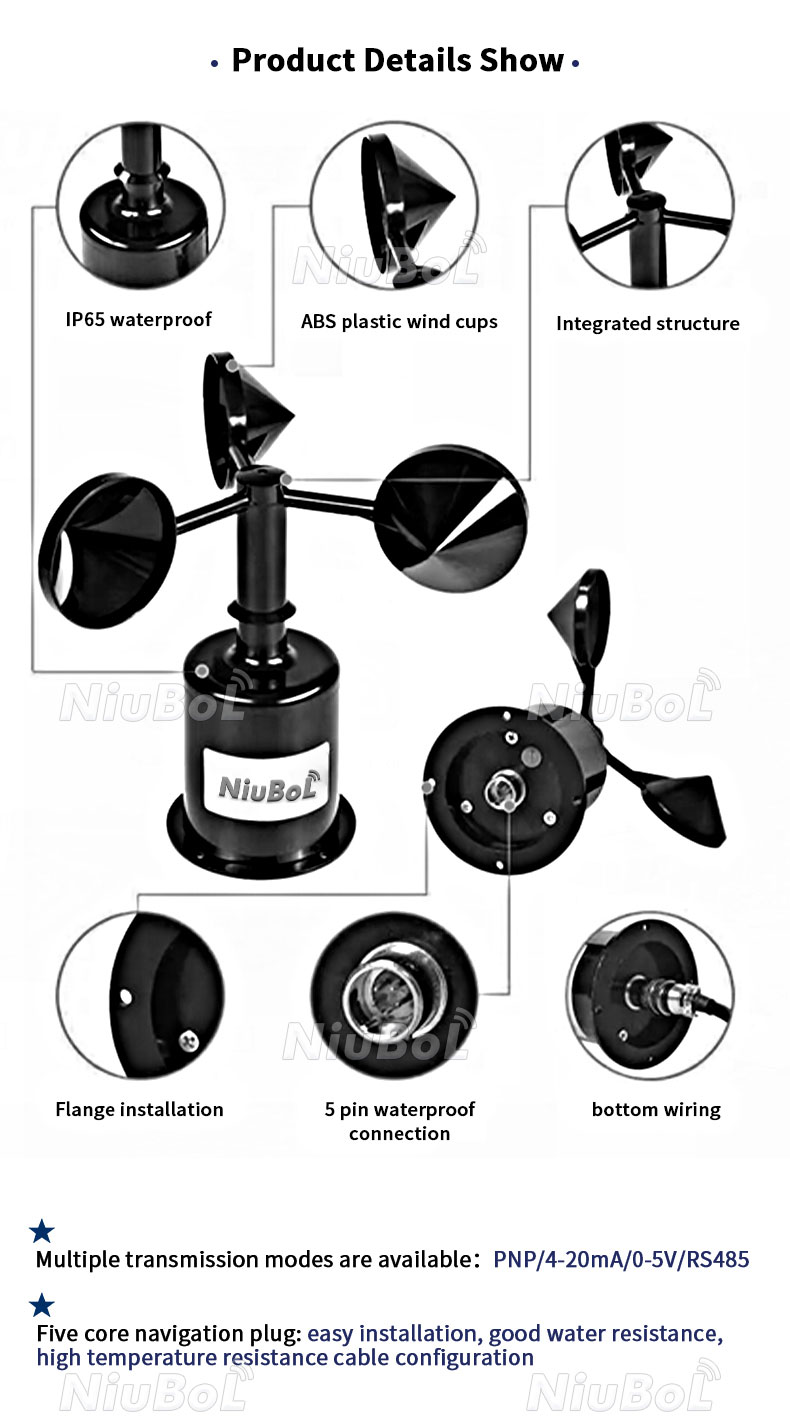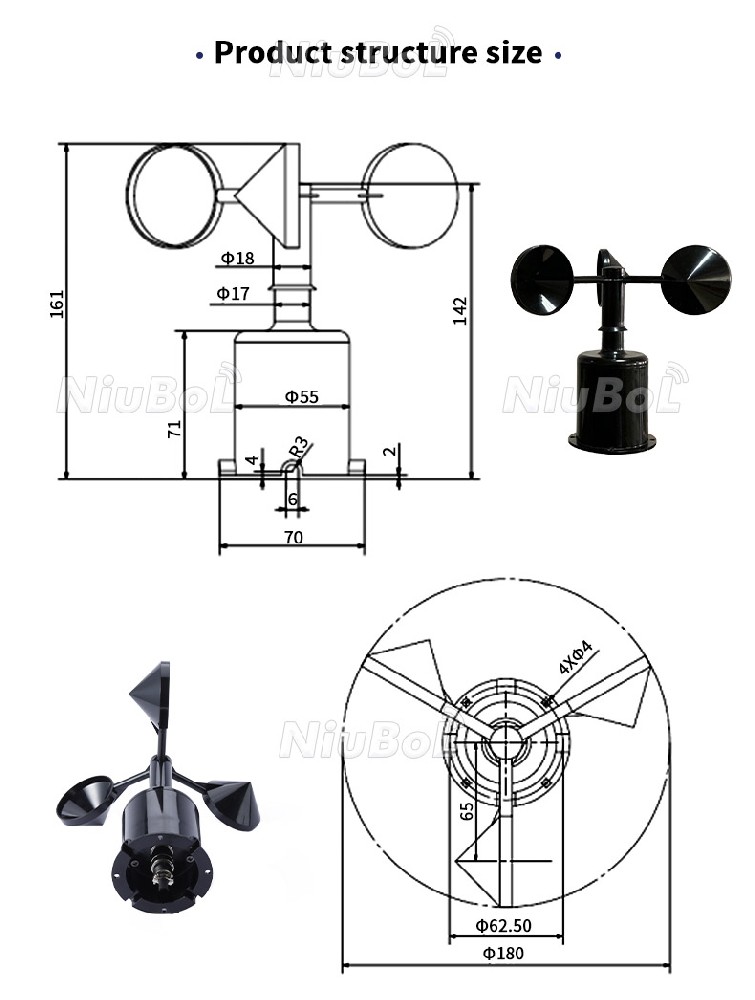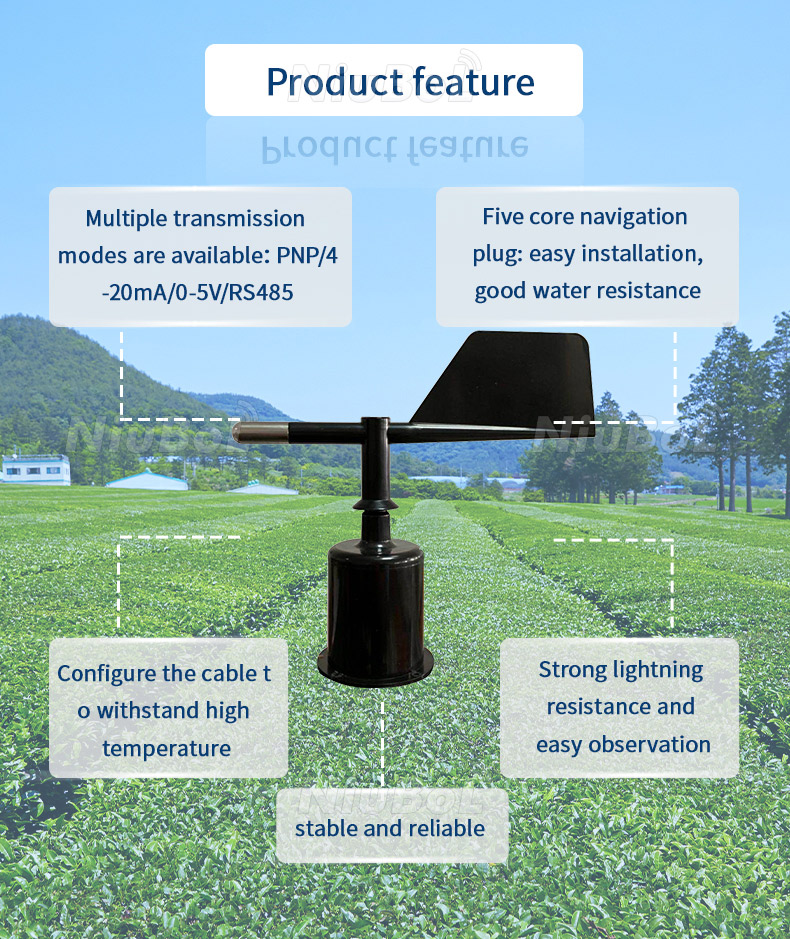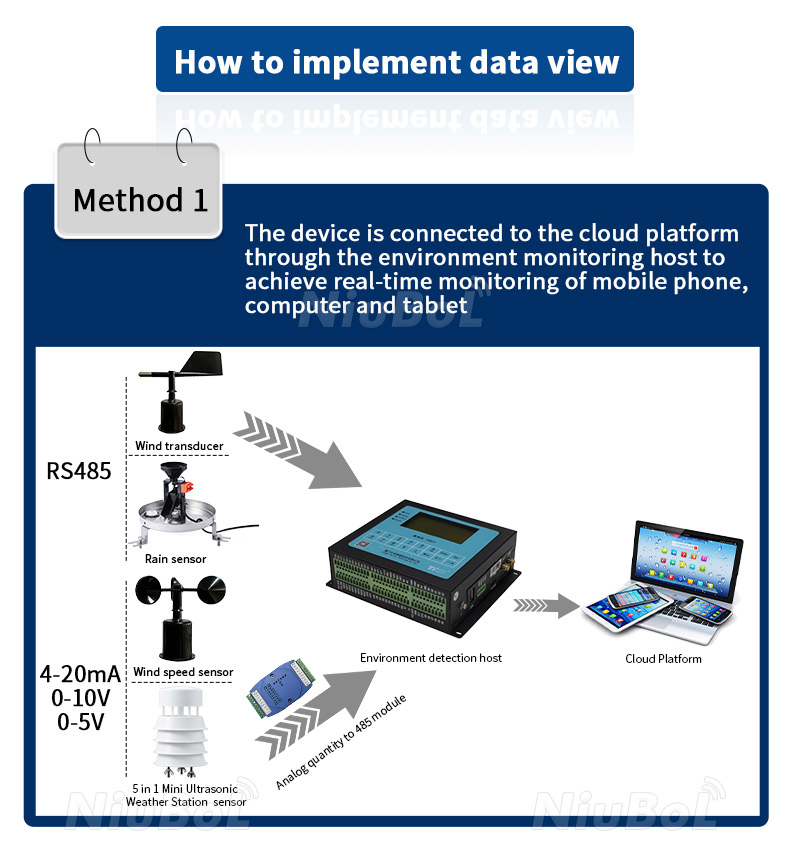

— Blogs —
—Products—
 Consumer hotline +8618073152920
Consumer hotline +8618073152920 WhatsApp:+8615367865107
Address:Room 102, District D, Houhu Industrial Park, Yuelu District, Changsha City, Hunan Province, China
Product knowledge
Time:2024-09-17 09:37:15 Popularity:1042
Anemometers are instruments used to measure wind speed and direction, and derive their name from the Greek word “anemos” meaning “wind”. Anemometers play a vital role in meteorology, aviation, environmental monitoring and other fields where wind speed and direction need to be monitored. They can be used to predict weather patterns, optimize wind energy production, ensure the safety of building structures, monitor air quality, and support a variety of outdoor activities. They are used in a wide range of applications, including meteorological observation, environmental monitoring, aerospace, agriculture, and construction.
- Cup anemometer: using three or four hemispherical cups, the wind speed causes the cups to rotate and the wind speed is calculated from the speed of rotation of the cups.
- Spiral anemometer: the wind pushes a spiral-shaped device to rotate, and the wind speed is measured by the speed of rotation.
- Hot-wire anemometer: Measurement of wind speed by measuring the change in current caused by the change in wind speed through a hot wire.
- Ultrasonic Anemometer: Measures wind speed by utilizing the change in velocity of an ultrasonic signal traveling through the wind.

An Outdoor Anemometer is a wind speed measurement instrument specifically designed for use in outdoor environments. It usually has the following characteristics:
- Weatherproof: able to withstand various weather conditions such as rain, snow, direct sunlight, etc.
- Ruggedness: Rugged construction for use in variable and harsh outdoor environments.
- Remote Transmission Capability: Many outdoor anemometers can transmit data remotely for easy monitoring indoors or at other locations.

Outdoor Anemometers are Anemometers designed for outdoor use and are able to withstand a wide range of weather conditions including extreme temperatures, humidity and wind and rain. They are typically mounted in elevated locations such as rooftops, towers, or weather stations to obtain the most accurate wind speed and direction readings.Outdoor Anemometers can be mechanical, such as the Cup Anemometer, or electronic, such as the Ultrasonic Anemometer.
Outdoor Anemometers are used in a wide range of application scenarios, mainly including the following:
1. Meteorology: Outdoor Anemometers are used to collect real-time wind speed and direction data, which are critical for weather forecasting and climate research. They help meteorologists predict storms, typhoons, and other weather events, thereby improving public safety.
2. Aviation: Airports use Outdoor Anemometers to monitor wind speed and direction, which are critical to the safety of airplane takeoffs and landings. They are also used to assess the impact of wind on flight plans and to ensure that flights run smoothly.
3. Environmental monitoring: Outdoor Anemometers are used to monitor air quality, especially in industrial and urban areas. They help scientists to understand how wind affects the distribution of pollutants so that effective environmental protection strategies can be developed.
4. Wind energy production: Wind farms use Outdoor Anemometers to optimize the performance of wind turbines. By monitoring wind speed and direction, operators can adjust the angle and speed of the turbines to maximize energy production.
5. Architecture and engineering: Architects and engineers use the Outdoor Anemometer to assess the resistance of buildings and structures to wind. This helps ensure that designs meet safety standards, especially in windy or hurricane-prone areas.
6. Outdoor activities: Outdoor Anemometers are essential for sailing, kitesurfing, paragliding and other wind-affected sports. They help athletes and organizers make decisions based on current wind speed and direction to ensure a safe and successful event.
7. Agriculture: Farmers use anemometers to monitor wind speeds on their farmland in order to rationalize the planting and management of their crops.

1. Provide real-time wind speed data: Outdoor anemometers can monitor and record wind speed data in real time, providing support for research and decision-making in related fields.
2. Risk assessment: In the warning of meteorological disasters (e.g. typhoons, tornadoes), the data provided by anemometers can help to assess the risks and take timely measures to reduce the losses.
3. Optimize design and operation: In fields such as aerospace, agriculture, and construction, anemometer data can help optimize design and operation to improve efficiency and safety.

Summarizing
In conclusion, Outdoor Anemometers are an indispensable tool for measuring and monitoring wind speed and direction in outdoor environments. They play a key role in a number of areas, from weather forecasting to wind energy production to the safe management of outdoor activities. By providing accurate data on wind speed and direction, Outdoor Anemometers help us better understand and respond to the natural forces of wind.
Prev:What is difference between soil moisture sensor and relative humidity sensor?
Next:What are the applications of temperature and humidity sensor?
Related recommendations
Sensors & Weather Stations Catalog
Agriculture Sensors and Weather Stations Catalog-NiuBoL.pdf
Weather Stations Catalog-NiuBoL.pdf
Related products
 Combined air temperature and relative humidity sensor
Combined air temperature and relative humidity sensor Soil Moisture Temperature sensor for irrigation
Soil Moisture Temperature sensor for irrigation Soil pH sensor RS485 soil Testing instrument soil ph meter for agriculture
Soil pH sensor RS485 soil Testing instrument soil ph meter for agriculture Wind Speed sensor Output Modbus/RS485/Analog/0-5V/4-20mA
Wind Speed sensor Output Modbus/RS485/Analog/0-5V/4-20mA Tipping bucket rain gauge for weather monitoring auto rainfall sensor RS485/Outdoor/stainless steel
Tipping bucket rain gauge for weather monitoring auto rainfall sensor RS485/Outdoor/stainless steel Pyranometer Solar Radiation Sensor 4-20mA/RS485
Pyranometer Solar Radiation Sensor 4-20mA/RS485
Screenshot, WhatsApp to identify the QR code
WhatsApp number:+8615367865107
(Click on WhatsApp to copy and add friends)
